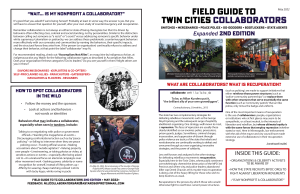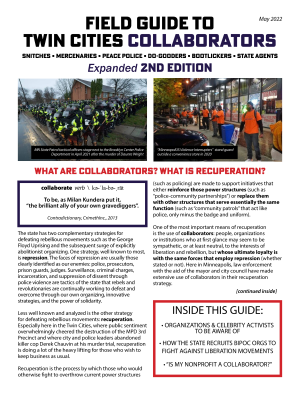Anonymous
Field Guide to Twin Cities Collaborators (2022 Edition)
Snitches, Mercenaries, Peace Police, Do-Gooders, Bootlickers, State Agents
What Are Collaborators? What Is Recuperation?
Some Prominent Nonprofit Collaborator Groups
Minneapol*US* Violence Interrupters
MAD DADS (“Men Against Destruction - Defending Against Drugs And Social Disorder”)
“That’s a lot of BIPOC Groups on that list...”
3 Examples of “Celebrity Activist” Collaborators
PDF imposed version for printing
What Are Collaborators? What Is Recuperation?
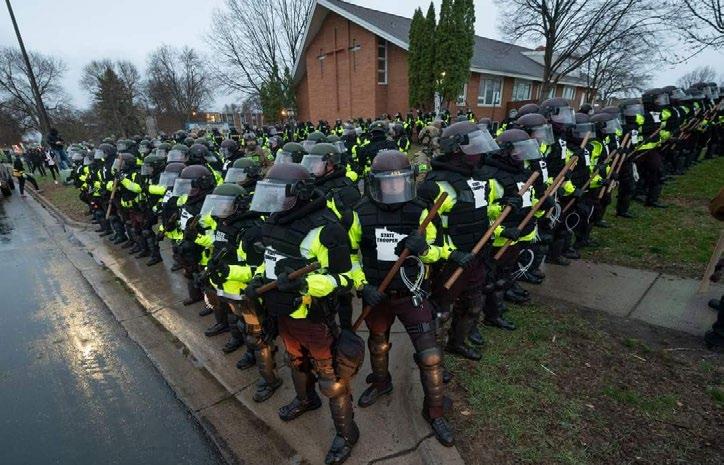
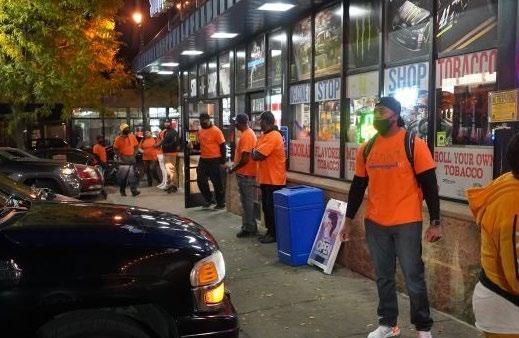
collaborate verb \ kə-ˈla-bə-ˌrāt
To be, as Milan Kundera put it, “the brilliant ally of your own gravediggers”.
--- Contradictionary, CrimethInc., 2013
The state has two complementary strategies for defeating rebellious movements such as the George Floyd Uprising and the subsequent surge of explicitly abolitionist organizing. One strategy, well known to most, is repression. The faces of repression are usually those clearly identified as our enemies: police, prosecutors, prison guards, judges. Surveillance, criminal charges, incarceration, and suppression of dissent through police violence are tactics of the state that rebels and revolutionaries are continually working to defeat and overcome through our own organizing, innovative strategies, and the power of solidarity.
Less well known and analyzed is the other strategy for defeating rebellious movements: recuperation. Especially here in the Twin Cities, where public sentiment overwhelmingly cheered the destruction of the MPD 3rd Precinct and where city and police leaders abandoned killer cop Derek Chauvin at his murder trial, recuperation is doing a lot of the heavy lifting for those who wish to keep business as usual.
Recuperation is the process by which those who would otherwise fight to overthrow current power structures (such as policing) are made to support initiatives that either reinforce those power structures (such as “police-community partnerships”) or replace them with other structures that serve essentially the same function (such as “community patrols” that act like police, only minus the badge and uniform).
One of the most important means of recuperation is the use of collaborators: people, organizations or institutions who at first glance may seem to be sympathetic, or at least neutral, to the interests of liberation and rebellion, but whose ultimate loyalty is with the same forces that employ repression (whether stated or not). Here in Minneapolis, law enforcement with the aid of the mayor and city council have made extensive use of collaborators in their recuperation strategy.
Consider these examples of recuperation:
-
As abolitionists called for alternatives to policing, politicians took up the challenge by pouring money and resources into non-police groups that still work with the police and serve the police’s purpose of defending racial capitalism.
-
As police reform campaigns drew attention to the fact that over 90% of MPD officers live outside the city, business and law enforcement interests hurried to prop up collaborator groups whose leadership and members do often live in Minneapolis.
-
As racial justice advocates have gained enough traction that even nakedly anti-Black, exploitative corporations now regularly use phrases like “Black Lives Matter” or “Say Their Names,” the elites have turned especially to Black collaborators (many of whom now have the opportunity to work with the blessing of powerful government institutions for the first time). This is a divide and conquer tactic against multiracial (especially militant Black youth-led) rebellious movements less likely to fight back against a Black or brown nonprofit worker in a t-shirt than against a white cop in riot gear.
The Office of Violence Prevention (OVP) a Minneapolis city government department created in 2018, after campaigns to divert money from police to other programs grew in the wake of the MPD murder of Jamar Clark and community occupation of the MPD 4th Precinct. The name of the department is a misnomer because while it funds programs it believes will help prevent interpersonal violence and violence from those with less power directed toward those with more power (for example, looting), it does not seek to prevent structural violence (like evictions) nor violence from those with more power directed toward those with less power (such as police killings or mass incarceration).
Reform-minded abolitionist groups like Reclaim The Block push for more money for OVP, either neglecting or condoning the way OVP is used for recuperation of liberation movements and to act as a pressure valve for the government.
Some Prominent Nonprofit Collaborator Groups
Minnesota Freedom Fighters
Originally formed in the wake of the George Floyd Uprising as the result of a call from the NAACP to protect northside businesses, the "Freedom Fighters" are an organization of mostly Black men, often seen wearing branded tshirts and sometimes tactical gear like bulletproof vests with triangular yellow badges. Sometimes they have even worn black bloc-like attire to blend in with frontliners, then dissuade confrontational action—such was the case in Brooklyn Center after the murder of Daunte Wright
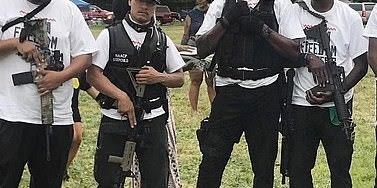
The group will sometimes carry AR15 rifles (but not when contracted by city government/law enforcement). They describe themselves as "an elite security unit dedicated to protect the citizens and businesses of the Minneapolis urban areas."
They have loudly confronted and physically assaulted people at anti-police protests who do not adhere to their idea of "peaceful protest" (for example, who hold umbrellas or cut a fence), whom they have targeted with misogynist, homophobic and transphobic vitriol. On May 25, 2022, two years since the lynching of George Floyd by Mayor Jacob Frey’s MPD, they came to a candlelight vigil and, carrying rifles, effectively served as bodyguards for Frey along with members of Agape.
The group proudly and openly collaborates with the Minneapolis Police Department and other law enforcement. Sasha Cotton, director of the OVP, noted in an interview that the group is in regular contact with police precinct commanders and meets with the chief of police.
Minneapol*US* Violence Interrupters
A program created by the OVP in the wake of the 2020 Uprising. Wearing distinctive bright orange tshirts with their logo, the “violence interrupters” are supposedly tasked with patrolling streets to de-escalate any street-level conflict they happen to come across. While this might be worthwhile if it did not replicate modes of policing, they also spent much of their time in 2020/2021 in support of MPD during anti-police protests, perhaps most notably telling people to go home and then directing a crowd into a mass arrest situation at a protest outside the 5th precinct, the night killer cop Derek Chauvin was released from jail pending trial.

They have never been seen attempting to “interrupt” police violence. To the contrary, many MPD officers have praised the program, and have been heard on scanner audio requesting the Violence Interrupters to help handle hostile crowds. Nor do they seek to interrupt the violence, structural or otherwise, of wealthy white Minneapolis capitalists.
In 2022, Minneapolis Public Schools approved a pilot program to use the Violence Interrupters for after-school security at North, South and Patrick Henry high schools.
They and their partner groups utilize a mix of paid and volunteer staff. Multiple organizations receiving “Office of Violence Prevention” funding seem to use the “MinneapolUS” branding. One of the most prominent is T.O.U.C.H. Outreach, which also wears golden yellow shirts. They are based in a building next to the Lake Street Blue Line station.
Lake Street and Broadway Avenue are common locations to see the patrols walking in the late afternoon and nighttime.
Agape Movement
Agape Movement is a Christian-oriented nonprofit incorporated in the summer of 2020 after the Minneapolis Uprising. Their mission is “to bridge the gap between the community and law enforcement.” They say they aim to be a “reliable resource of housing, food, mental health, education & advocacy programs”; however their most visible activities have been providing security for private business, foot patrols, and recuperation of Black liberation struggles into reformist, capitalist and pro-police activities.
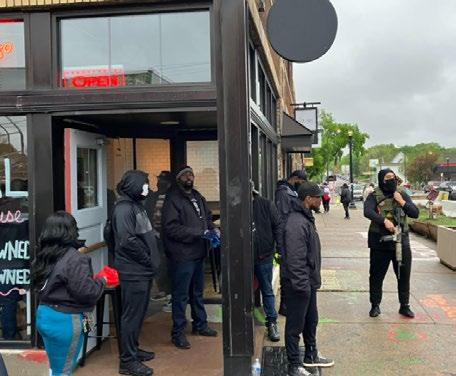
Agape members were paid $40/hour, according to a signed contract obtained by Sahan Journal, to assist the Minneapolis Public Works department in their demolition of much of George Floyd Square on June 3, 2021. (The total contract paid Agape up to $359,000 for “revitalizing 38th and Chicago” - a euphemism for suppressing rebellion in favor of prioritizing business and police interests.) As one witness wrote, “Many of the members of Agape were on the frontlines [during the May 2020 rebellion], and to see those who moved dumpsters and blocked the streets just one year later threatening and issuing slurs at those who came [on June 3] with the notion to defend the square leaves a gaping hole in our heart.” Indeed, Agape members previously thought by many to be allies instead directed nasty homophobic, transphobic and misogynist remarks at community members, and instigated physical altercations against those rebuilding barricades at the square and otherwise opposing their agenda.
In a May 21, 2022 copaganda piece in the Star Tribune, co-founders Steve Floyd (who previously worked for the Hennepin County prosecutor’s office) and Marquis Bowie play up how Agape supposedly “created” George Floyd Square, and tell a story about insulting a white person who criticized Agape for doing the work of police. This reliance on empty identity politics, erasing the concerns of innumerable Black activists and community members about Agape’s behavior, is typical of the organization.
Many of Agape’s members are drawn from communities and affiliations that have been targets of intense racialized state repression, which has made them more vulnerable to being co-opted by law enforcement and city government.
A Mother's Love
A “grassroots organization of African American Mothers and Fathers” with a religious orientation. Usually seen wearing pink and black t-shirts; has also been seen wearing city of Minneapolis badges around their necks. Amongst other programs, works in partnership with law enforcement. Leader Lisa Clemons is a former MPD officer who supports more police, often in belligerent social media posts. AML was paid to support police during the Derek Chauvin trial and Brooklyn Center protests. After the assassination of Winston Smith by deputies Timothy Inglett and Luke Mickelson, AML members spread lies such as “he shot at the officers” and “he was a child murderer” to try and demobilize direct action and anti-police protest.
The organization has also dabbled in unhoused outreach; in late 2021, they partnered with the city and county to operate a “resources” tent for 2 weeks at a northside encampment that consisted of little more than parroting government talking points about the unhoused. They also held a barbecue there at which they unapologetically gatekept access to the food being served with strange rules.
MAD DADS (“Men Against Destruction - Defending Against Drugs And Social Disorder”)
20+ year old organization founded to combat gangs and illegal drugs, with a wide variety of activities including collaborating with various police agencies. Mostly operate in Minneapolis but also in surrounding cities “at the request of law enforcement.” Frequently rides bus and light rail lines and supports Metro Transit Police. Have been seen in 2021 at racial justice and anti-police protests encouraging people to go home or to obey police orders. Patrollers often wear green tshirts or reflective vests and black caps with their logo.
We Push for Peace
A group with a variety of programs including working with MPD and Hennepin County Sheriff. Members often wear blue, white or red hoodies or polos with the group’s logo. They were paid to support police during the Derek Chauvin trial and Brooklyn Center protests, and were instrumental in the repression of protests after the murder of Winston Smith, known for making threats of violence against young militants. Members were also present at a city-paid de facto campaign press conference by Mayor Jacob Frey advocating for more police. Corporate media frequently turns to them for pro-police quotes from community members of color.
They also perform security functions for businesses, such as at several Cub Foods locations in Minneapolis and Saint Paul. In two incidents last year, their members working at Cub first brutally beat an unhoused man on the sidewalk, then assaulted a man who brought a bicycle into a store. Both incidents were criminally charged and earned the group the nickname “We Push People For Peace.” Many have reported hostile behavior, misogyny, homophobia and transphobia from “We Push” workers at Cub.
“That’s a lot of BIPOC Groups on that list...”
Collaboration, recuperation and counterinsurgency transcend identity categories. Big LGB/T nonprofits like the Human Rights Campaign push assimilationist strategies at the expense of queer liberation. “Women’s rights” groups sometimes advance transphobic narratives so that only cis women may benefit. In the wake of the George Floyd uprising, the role of BIPOC collaborationist organizations, as part of the state’s strategy to suppress liberation movements, is especially worth examining further.
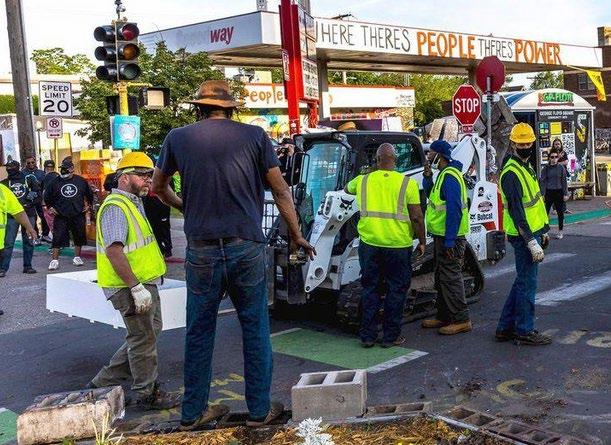
BIPOC organizations engaging in recuperation, by the nature of their membership, tend to be more adept at both speaking the language of racial justice and at de-mobilizing potential white race traitors. Thus they can be harder to spot, when only words and not actions are observed.
We turn here to “The Rise of Black Counterinsurgency” by organizer and author Shemon[1], writing about the slide from revolutionary into reformist political action in the wake of the George Floyd Rebellion [emphasis added]:
Black NGOs, including the groups in the Movement for Black Lives, have played a key role in this counterinsurgency campaign. Their social base is not the Black proletariat, but the Black middle class and – most importantly – the white bourgeoisie, through the mediation of philanthropies. In order to co-opt the movement, the bourgeoisie is throwing money at problems generated by racial capitalism. In the NGO, they have found a willing group of people who will happily accept their dollars. Money is falling from the sky: if you are Black, middle class, and can say Black Lives Matter three times, money will magically appear in your lap.
While these NGOs vary politically, they tend to have little or no background in struggle, no particular concern for movements, and ultimately no interest in overthrowing racial capitalism. (...) However, because the movement generated by the George Floyd Rebellion is new, many of its participants are still easily confused, and thus continue to display a servile willingness to follow any Black person that shows up with a megaphone. While it is inevitable that some NGO activists will once again split away from their groups and join the more radical elements in the movement, any strategic orientation that centers their potential energy is mistaken. Waiting around for the radicalization of the NGOs is like waiting around for unions to radicalize. Somehow, NGOs must eventually be kicked out of the movement.
In “Fuck Identity, We Need Solidarity,” Pittsburgh Radical Perspectives argues that identity categories are not a sufficient means on which to evaluate an individual or group:
“It is a well-worn activist formula to point out that “representatives” of different identity categories must be placed “front and center” in struggles against racism, sexism, and homophobia. But this is meaningless without also specifying the content of their politics. The US Army is simultaneously one of the most racially integrated and oppressive institutions in American society. We must urge all white “accomplices” - there is no singular “Black leadership” and don’t feel guilted into following those that claim that they are!”[2]
While anyone who works with the state and counterinsurgent forces to suppress liberatory movements is a collaborator, collaborators who cloak themselves in social justice language and portray themselves as friendly to resistance movements are especially of concern. Unsurprisingly, white collaborators tend not to conceal their counterinsurgent activities as much as BIPOC collaborators do. Under today’s anti-Black colonial- capitalist order, overt collaboration is the default position for white-settler individuals and groups. We have taken this into account when deciding whom to feature in this field guide.
DO NOT ASSUME FROM THIS GUIDE THAT WHITE ACTIVISTS/ORGANIZATIONS ARE LESS LIKELY TO COLLABORATE WITH THE ENEMIES OF LIBERATION - IF ANYTHING, THE OPPOSITE IS TRUE.
3 Examples of “Celebrity Activist” Collaborators
Nekima Levy-Armstrong
Nekima Levy-Armstong is founder of the Racial Justice Network (RJN), attorney, former Minneapolis NAACP president, and former mayoral candidate. She rose to prominence during Black Lives Matter protests in 2014-2016. Since that time, her politics have become considerably more reformist and she has spoken out in favor of more police funding and against abolitionist and intersectional liberatory movements.
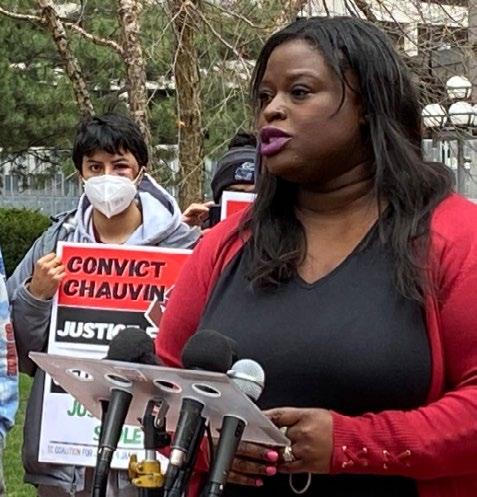
She supported Jacob Frey’s re-election campaign and that of right-wing congressional candidate Antone Melton-Meaux over Ilhan Omar. She is also a chairperson of Frey’s token “public safety workgroup.”
The group DocumentingMN has collected information about people’s experiences with Levy-Armstrong using the hashtag #NekimaWorksWithCops. After the MPD murder of Thurman Blevins, she harassed Black youth who chanted anti-police slogans. After the assassination of Winston Smith, she told protesters at the Smith/Marie memorial site to take down barricades, at the behest of then police chief Arradondo. Arradondo, and now interim chief Amelia Huffman, call Levy-Armstrong whenever there is a police shooting so as to utilize her clout towards calming community outrage. After the MPD murder of Amir Locke, her actions disrupting a police press conference went viral; however she continued to work with Frey and MPD to frame token reforms as capable of “rebuilding trust” in police. Her organization RJN helped organize token-opposition rallies at which speakers spent more time denouncing property destruction than the police.
Significantly, Levy-Armstrong’s homophobia, transphobia and abuse of young queer BIPOC activists have been well documented since 2015. That year, many called out her conduct in silencing dissenting queer youth at the 4th precinct occupation in the wake of the MPD murder of Jamar Clark.
Sheila Delaney

Delaney is a pro-developer consultant and event planner who poses as an advocate for the homeless, and antagonizes mutual aid workers and unhoused encampment supporters. Per a city contract, she’s paid $110/hr (up to $95,000) through her company Dovetail Celebrations for undefined “homeless response support” for 2021-2024.
In summer 2020, Delaney helped drum up fear amongst Powderhorn Park neighbors, helping lead to the destruction of the sanctuary encampments there. In 2020-2021, she was involved in the creation of Avivo Indoor Villages, an indoor tiny-house shelter community helpful for some, but sharply criticized by many unhoused residents for its carceral qualities. On Indigenous People’s Day 2021, she showed up along with trucks of contractors who attempted to clear out an encampment sheltering many unhoused Native community members.
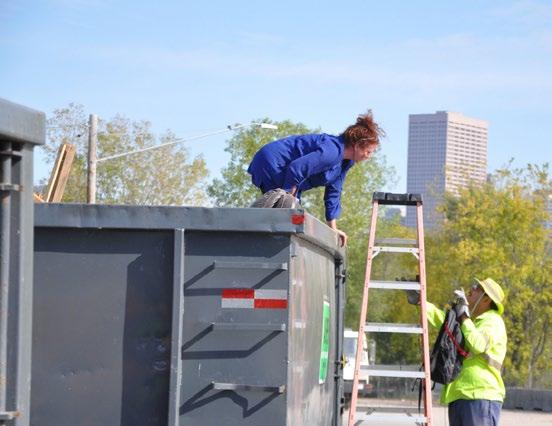
In the 2021 elections, Delaney supported the campaigns of Jacob Frey and conservative council member Lisa Goodman, both of whom she calls “good friends”. The following winter, with her friend multimillionaire developer Hamoudi Sabri, she encouraged unhoused people to move to an encampment in the North Loop, then allowed Sabri to harass and assault them. When the camp was evicted in a massive police operation, she showed up to laugh at and insult residents.
In recent months Delaney has made a habit of starting seemingly drunken arguments with mutual aid workers and encampment supporters on social media, then deleting the messages later.
Marvin Applewhite
Applewhite, also known as “Marvin El,” is a local entrepreneur who runs a small business aptly called “Blueline Cleaning and Debris Removal”. He became known to many in the summer of 2021 for crusading against the memorial garden at Lake and Girard created in the wake of the police murder of Winston Smith and subsequent killing of protest corker Deona Marie.
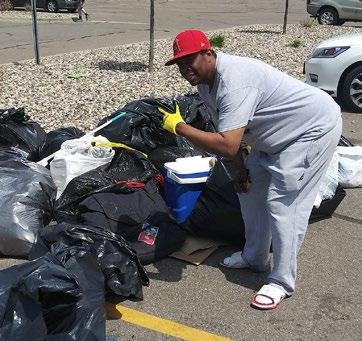
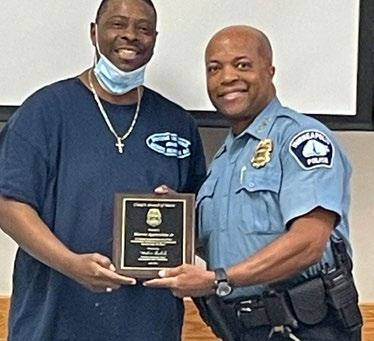
Applewhite allied with right-wing fearmongers like Steve Taylor of “Uptown Crime” facebook group infamy, to regularly powerwash and destroy artwork and messages at the memorial site, insulting protesters and community members who asked him to stop. During the May/June 2020 Uprising, Applewhite spent his time volunteering to help businesses like Target paint over graffiti art and clean up trash, earning him much corporate media applause.
These activities have made him a favorite token Black face for right-wing pro-police groups like Operation Safety Now. Applewhite attempts to ingratiate himself to liberals and leftists by emphasizing how he engages in charitable activities and employs Black youth for his “clean-ups." However, per a 2021 GoFundMe campaign, he actually only pays volunteer youth a small stipend, based on the amount of donations he receives.
But wait, there's more!
Some other organizations not listed in this guide which have received government funding for their recuperative work in 2021 and 2022 include: Center for Multicultural Mediation; Native American Community Development Institute (NACDI), Corcoran Neighborhood Organization, C.E.O. (Change Equals Opportunity), New Salem Missionary Baptist Church, Restoration Inc., and American Indian Community Development Corporation (AICDC).
This is by no means an exhaustive list.
Collaborators & Critique
One of the best ways to gauge whether a big- name activist is making decisions based on what’s best for liberation movements, or what’s best for their own clout, is to note their response in the face of critique from within the movement.
When their actions come under criticism from a comrade, a celebrity activist and/or collaborator will often launch a belligerent counterattack rather than addressing the issue at hand.
Instead of saying “Tell me more about what you’re thinking,” “what would you have done different?”, or even just ignoring a critique they feel is baseless, consider responses like these:
-
Denouncing anonymity: “Why won’t you put your real name behind that?” (Anonymity is crucial for many to protect themselves from both state repression and abuse at the hands of volatile movement personalities.)
-
Making counter-accusations: “All you want to do is fight cops!”
-
Nitpicking minor issues or irrelevant facts in the critique. “Actually, it was a Tuesday. See, you don’t know what you’re talking about.”
For example, Tara Houska, a prominent activist with Honor the Earth and Giniw Collective active in the struggle to Stop Line 3, ticked each of these behaviors in one tweet. This was her response to a young Native militant who published an article arguing that these NGOs would be better off building stronger communities of Native anti- colonial resistance, than hosting white “weekend warriors” for nonviolent civil disobedience actions:
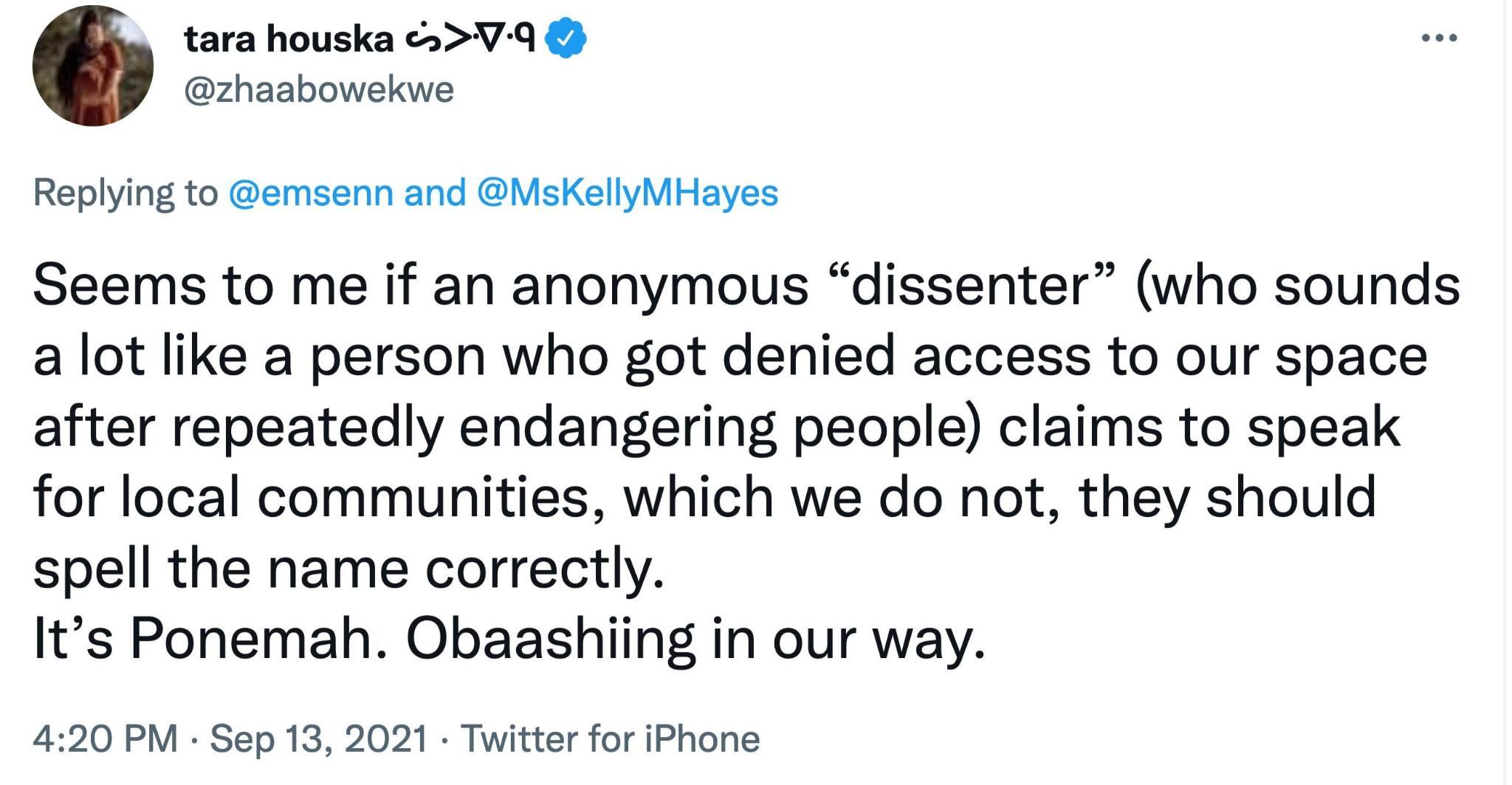
This is just one example of why activists who gather clout and celebrity can be of concern for healthy & resilient social movements.
“Wait...is my nonprofit a collaborator?”
It’s good that you asked! If we’re being honest? Probably at least in some way, the answer is yes. But you will have to answer that question for yourself, after your own study of counterinsurgency and recuperation.
Remember collaboration is not always an either/or state of being. Recognize too that it is driven by behaviors often reflecting class, colonial and social standing, not by personalities. Similar to the distinction between calling out someone as “a racist” or “a sexist” versus addressing someone’s specific behavior under white supremacy/colonialism or patriarchy, we can address these problematic counterinsurgent behaviors more effectively with our comrades and communities by naming the behaviors, their specific impacts, and the structural forces they arise from. If the person (or organization) continually refuses to address and change their behavior, at that point the label “collaborator” may fit.
For recommended reading, check out “Accomplices Not Allies”, an essay/zine by Indigenous Action, at indigenousaction.org.[3] Watch for the following collaborator types as described in Accomplices Not Allies. Does your organization fit these categories? Do its leaders? Do you see yourself in them? Might others see you in these?
SAVIORS/MISSIONARIES • €XPLOITER$ & CO-OPTERS • SELF-PROCLAIMED ALLIES • PARACHUTERS • GATEKEEPERS • NAVIGATORS & FLOATERS • RESIGNERS
How to spot collaborators in the wild
-
Follow the money and the sponsors
-
Look at actions and behaviors - not words or identities
Behaviors that may indicate a collaborator, especially when seen in tandem, include:
Talking to or negotiating with police or government officials • Hoarding the megaphone at events • Discouraging confrontational action such as by “peace policing” - or failing to intervene when they see peace policing occur • Trusting official sources • Making accusations about “outside agitators” • Valuing property over people • Livestreaming, or taking photos or video, at sensitive actions or events—especially after being asked not to • An unnatural focus on electoral campaigns over other movement work • Seeking power, celebrity or name recognition for oneself, instead of lifting others up • Affinity for wearing cheap matching colored t-shirts with tacky logos, while roving in packs.



